People sometimes introduce animals and plants into new areas. When these harm their new environment, we call them invasive species.
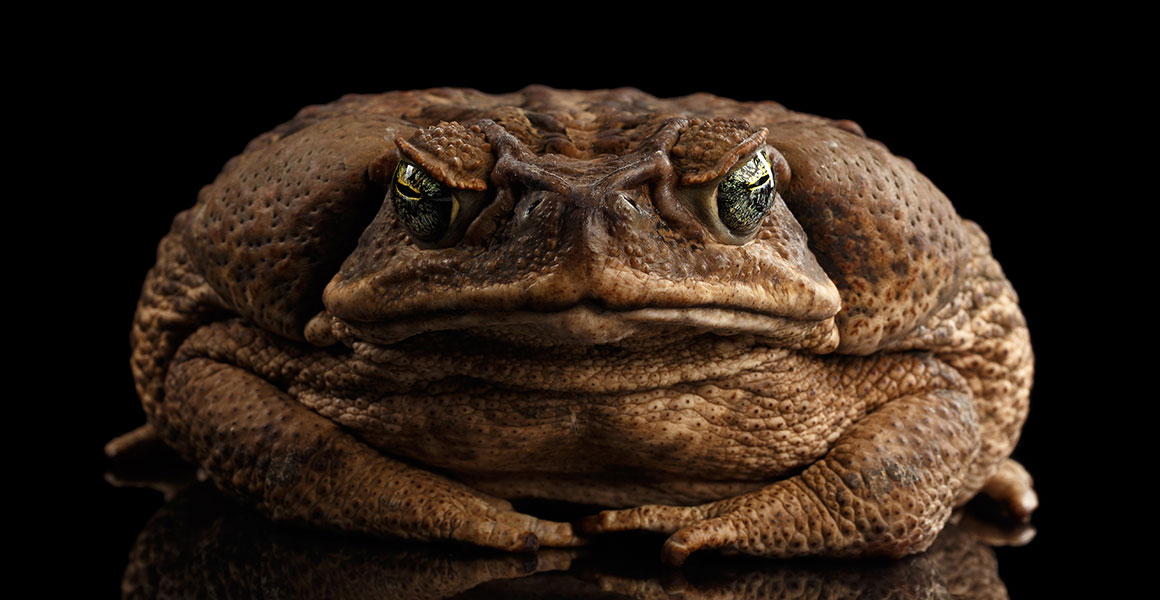
Cane toads are a common sight in northern Australia. Introduced in the early twentieth century, they are now an invasive species there. © Seregraff/ Shutterstock
In some places, invasive species have changed the natural world beyond recognition.
How do animal and plants move around the planet? And what happens when they come into conflict with other organisms? Our wildlife experts have the answers.
What are native, non-native and introduced species?
A native species becomes part of an ecosystem through natural processes.
Non-native species are those found outside their normal range because of human activity. We sometimes call them introduced species. Not all introduced species are invasive. Many of them can thrive in new areas and pose no threat to others.
Like non-native species, invasive species occur outside their normal ranges. But they also have a negative impact on other organisms or environments. In their normal ranges there may have been species that controlled them, but these predators, herbivores or parasites may not exist in the new environment. Invasive species are also often well suited to their new environment.
Why are invasive species a problem?
Invasive species can do all sorts of damage to an existing ecosystem. This can include changing habitats and starving native animals of food and resources.
They may eat or parasitise native species, which sometimes have no defences against them. They can also outcompete native species for food, light or nesting sites. Sometimes they even bring new diseases with them.
Often, an introduced species can breed very quickly. If left unchecked, they may dominate habitats and smother native wildlife.
Invasive species are a much bigger threat to nature than many people realise. Species invasions are one of the biggest causes of ecosystem change. There are so many of them that some ecosystems are facing a big struggle to survive.
Invasive species can cause chaos in a finely balanced habitat. They are an even bigger threat to biodiversity than climate change. Invasives can also have a large economic impact on the areas they take over.
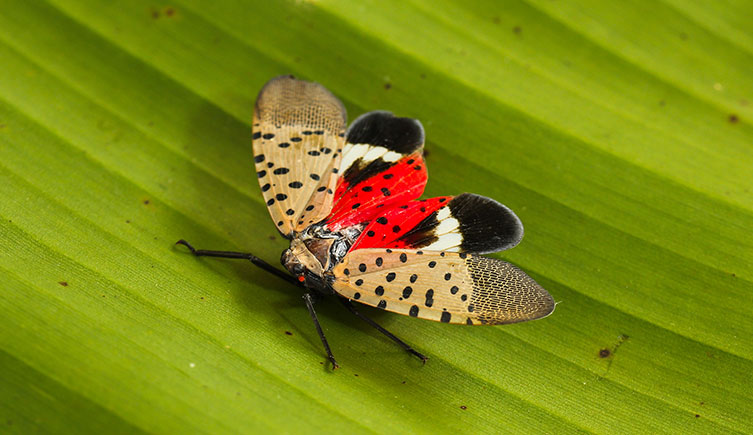
Spotted lanternflies are an invasive species in South Korea and the United States. They feed on plant sap and the waste product of their diet encourages a fungal disease. This can inhibit the plant's ability to photosynthesise.
How do invasive species spread?
Human activities are the biggest cause of the spread of invasive species.
Sometimes people deliberately move animals and plants around the world. They may do so to change an environment, as a form of pest control, to hunt, as horticultural specimens or to keep as pets. This can go very wrong if those animals and plants move into wild settings and start breeding or begin behaving in ways that humans didn’t predict.
People can also create a problem by accident. When we fly to holiday destinations or ship cargo, sometimes animals and plants will hitch a ride.
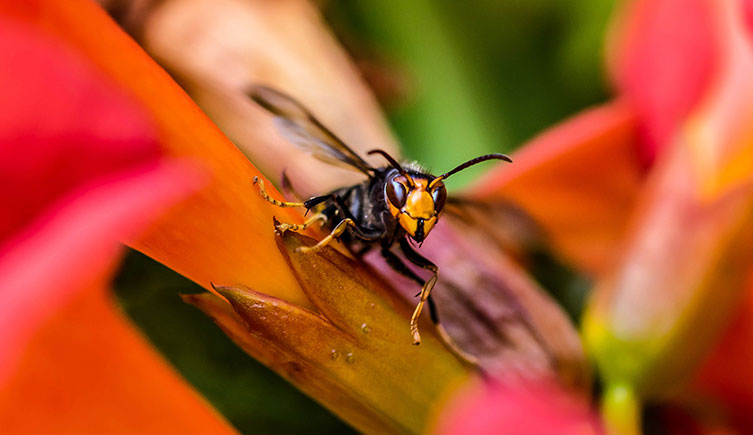
You may know Vespa velutina as the Asian or yellow-legged hornet. These invasive insects hunt honeybees. Asian hornets were first seen in the UK in 2016. © ID-VIDEO/ Shutterstock
At the Natural History Museum, Chris Raper manages the UK Species Inventory. This is a database containing the names of all known organisms in the UK. Chris is often one of the first people to be made aware of a new species as it arrives on UK shores.
‘Human interaction with animals and plants can be complicated,’ Chris explains. ‘Humans often don’t move animals deliberately, but through industry or transport. Or species were moved to neighbouring regions and then spread of their own accord.’
‘For instance, the Asian hornet, Vespa velutina, wasn’t brought to the UK, but rather to Europe on wooden pallets from China, then spread to the UK itself. That's still classed as a non-native invasive species.’
‘Similarly, marine species often wash up on our shores on man-made objects, which float much further than natural substances. They are also non-native species.’
Example: Cane toads, Bufo marinus
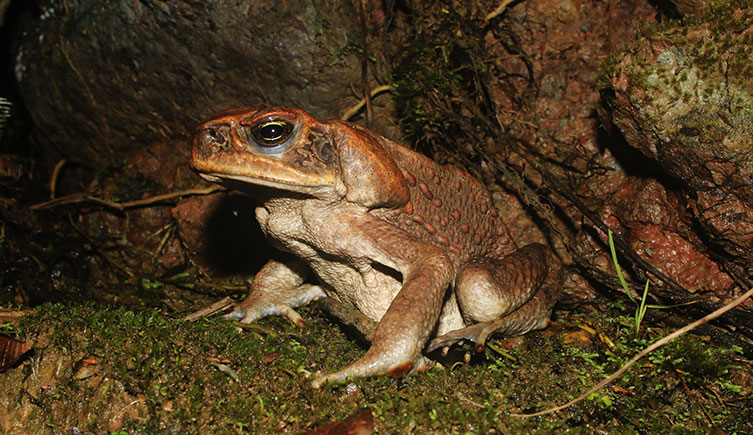
Cane toads are native to South and Central America. They are also an invasive species in Australia. © Panga Media/Shutterstock
Cane toads were deliberately introduced to Australia from Hawaii in 1935. At the time, grey-backed cane beetles were destroying sugar cane plantations. People hoped the toads would act as a biological control and eat the insects.
At first, scientists released just a handful of toads into Queensland. But this number soon grew as others followed suit. Within two years, 62,000 toadlets had been released into the wild.
The toxic, warty toads, native to South and Central America, did nothing to protect the plantations, but they did reproduce. Today we can find them all over the northern half of Australia.
Cane toads have had a big impact on Australian ecosystems. They are venomous at every stage of their life cycle, so they can kill predators that eat them. Some smaller predator species have learned to avoid eating the toads, but others have been worse affected.
The toads eat native Australian frogs and compete with them for food. But these negative impacts have been balanced by positive ones. The native frogs now face fewer large predators thanks to the toads.
This is one example of how invasive species can change an ecosystem in complex ways.
UK invasive species
Britain is home to more than 3,000 invasive species. Some have become commonplace, such as grey squirrels, muntjac deer, American bullfrogs and American mink.
Plants can be invasive, too. Japanese knotweed has caused havoc in some areas of the UK. It’s native to east Asia but the Victorians brought it to the UK as an ornamental plant. It’s now found all over the country and can be hard to control.
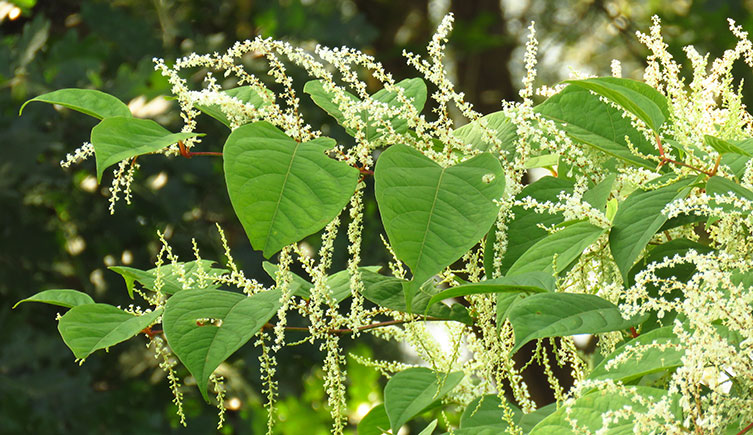
Japanese knotweed can choke native plants. © Przemyslaw Muszynski/ Shutterstock
Rhododendrons are a common sight in woodlands and gardens. It’s easy to think they are a native plant, but they were actually introduced to the UK in 1763. Rhododendrons are harmful to native species. They can carry disease and block light for plants growing beneath them.
Likewise, fungi and diseases can be carried around the world, and plenty are thriving in Britain. Ash dieback, Hymenoscyphus fraxineus, is a devastating invasive fungus. It threatens 95% of all European ash trees. Analysis suggests the spore came to Europe from Asia, where it grows on Asian ash trees without causing disease. It probably arrived in Europe on commercially imported ash.
Example: Grey squirrels, Sciurus carolinensis
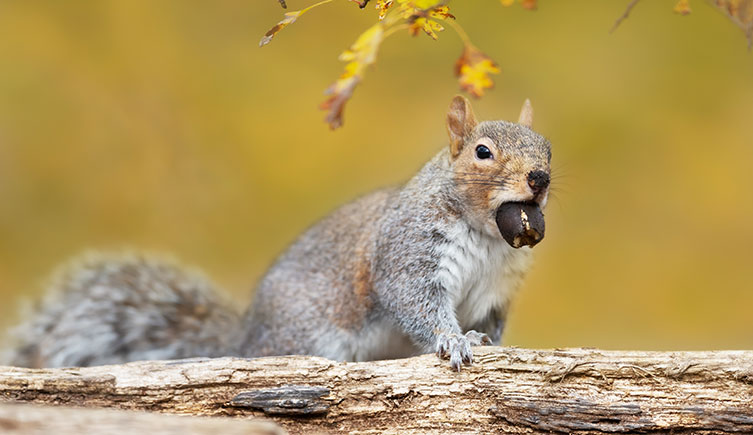
Grey squirrels are one of the most prevalent invasive species in Britain. © Giedriius/ Shutterstock
Grey squirrels are one invasive species almost everyone in the UK will have come across. You can spot their fluffy tails just about everywhere, from woodlands to inner city estates.
Grey squirrels are native to North America. In the 1870s they were introduced to private country estates in the UK, but it didn't take long for a wild population to successfully take over woodlands all over the country.
They have outcompeted Britain’s native red squirrels, Sciurus vulgaris. For about 10,000 years, red squirrels were found all over Britain. But their population numbers have suffered a catastrophic decline in the last century. It's due to a combination of factors:
- grey squirrels carry a virus called squirrelpox, or Parapoxvirus. They are immune to it, but the virus can be deadly to their red cousins
- grey squirrels breed quickly, but red squirrels do not
- grey squirrels can be better at collecting nuts and berries. This takes away food resources from red squirrels
- red squirrels’ natural habitat is being destroyed
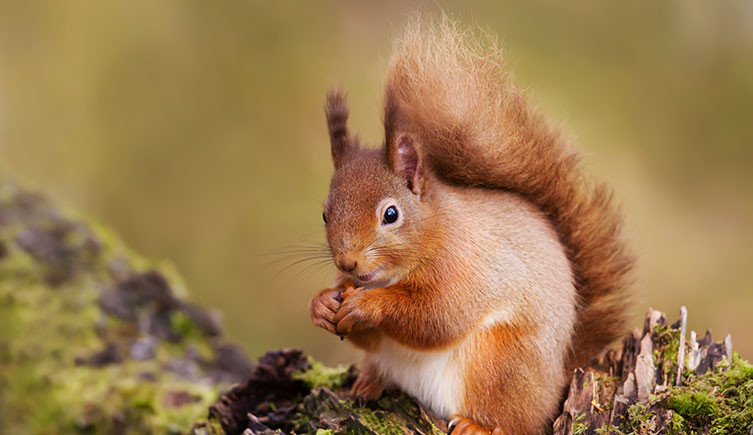
The red squirrel is now confined to small pockets of the UK. © Giedriius/ Shutterstock
Now red squirrels only cling on in a few strongholds, including the woodlands of Scotland and the Isle of Wight. To save them from extinction, conservationists need to manage populations of both red and grey squirrels.
As well as competing with other arboreal species, grey squirrels can also do damage to the trees they live in.
Their reputations as a pest species has led to their persecution and they are often poisoned, trapped and killed. This isn’t recommended by conservations or animal welfare advocates. After all, the decline of the red squirrel isn’t the fault of any individual grey, rather it’s the result of human mismanagement.
Ecologists have recommended ways forward which don’t involve killing grey squirrels. These include actively planting conifer forests, which red squirrels prefer. But this has even more implications: new conifer forests should never replace or damage ancient, semi-natural woodland or other native habitats, but may be useful within a well-balanced strategy across a landscape together with planned forestry management.
Invasive species and climate change
Invasive species may become more widespread with climate change.
Chris says, ‘Climate change will be a bigger driver because a warming atmosphere is likely to allow more species to move further. In the UK, as our winters get warmer, more species will be able to survive them.’
‘It also gives species a longer growing season than they might have had before and could weaken native species who could have difficulty handling the warmer climate. It’s a very complex issue.’
A changing climate could also affect the seasons by shortening or lengthening them. In the UK, there is evidence that butterflies emerge earlier during warm springs and summers. That could become a problem if those butterflies were invasive. The changing timeframes could mean different plants are being eaten by insects during different times of year.
Stephanie Holt is a UK Biodiversity Training Manager at the Natural History Museum. She supports people studying and recording the wildlife in the UK.
Steph says that climate change will inevitably result in animals and plants moving around the world, but that it’s not always going to be a bad thing.
'Habitats are going to change because of the planetary emergency, so that may mean we need to manage them differently,’ she explains. ‘We must work to conservation goals, which may not necessarily be the same as the preservation goals normally seen in habitat management targets.’
‘Species heading into the UK as a result of climate change need to be monitored in case they do become detrimentally invasive - but not all of them will. If we’re thinking about global species conservation goals, not all species migration is a bad thing, as species adapt and change.’
‘Climate change will result in winners and losers, and we have to allow for migration as part of basic conservation principles in the future.’
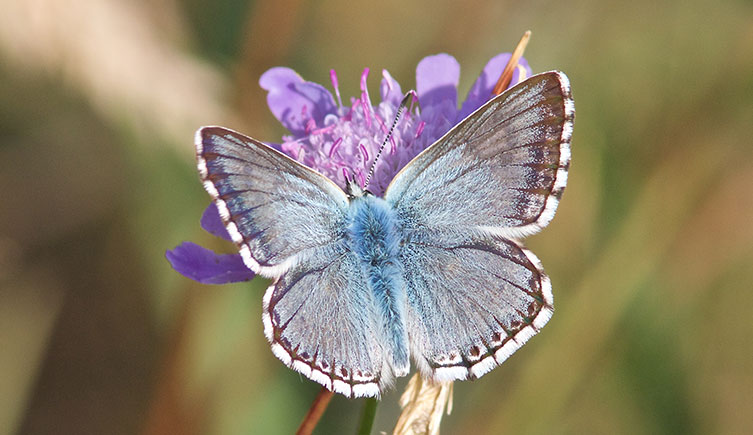
Climate has a big impact on the emergence date of chalkhill blue butterflies, Polyommatus coridon. © David J Martin/ Shutterstock
What can we do about invasive species?
Migrating and non-native species don’t necessarily become invasive.
The first step in controlling invasive species is understanding the behaviour of new species coming into the country. Monitoring and good biological recording is an important part of this. The UK relies on its network of experts, including the Natural History Museum, to help identify, record and monitor species.
When a new species is identified, studies are made of its behaviour in its native habitat. The species will not necessarily behave in the same way in a new environment that’s potentially free from predators or disease. Whether a new species will thrive or become dominant in a new environment needs to be studied and understood.
Once a species is shown to be invasive and potentially damaging, it’s monitored and, where possible, controlled. Control methods will vary depending on the species. They might include anything from dissuasive planting to eradication.
For example, on Uist, off the Scottish coast, hedgehogs were removed and translocated back to the mainland. Introduced there in the 1970s, hedgehogs may look cute and harmless, but they began eating wild bird eggs. The spiky mammals were then deemed an invasive species.
Steph explains, ‘Managing many non-native invasive species is an ongoing problem, and many may remain a long-term problem in many areas. However, there are many successful projects that have been run controlling the impact of some of these.’
‘From a public perspective, the key is to be observant. There are certain known invasive species to be on the lookout for, especially plants. Some are still sold in garden centres, such as parrot's feather - Myriophyllum aquaticum - an invasive water plant sold as an aerator in garden ponds. If it escapes into the wild it can cause havoc in native waterbodies. Technically it has been banned for sale since 2014 but does still crop up misidentified in horticultural stock.’
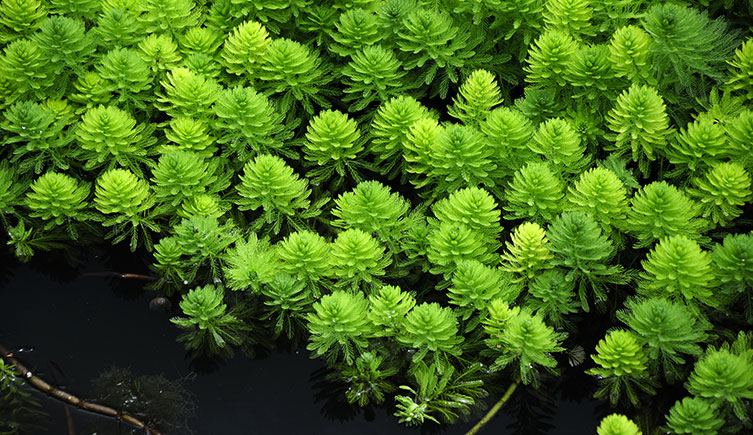
Some invasive species, like this parrot's feather, are still available to buy in the UK. Be wary when sourcing plants and buy from reputable retailers. © Dan Hanscom/ Shutterstock
How can you help?
You might spot some invasive species, such as the Asian hornet, in your garden or out on a walk. If you do, these basic principles of good biological recording can help experts:
- write down where you were, what you saw, when you saw it and who you are
- take a photograph to help with verification
- tell the landowner about a potential problem
- add your records to iRecord. They will enter national databases to help researchers and conservationists track change
- if you’re not sure what you've found, ask our Identification and Advisory Service for help
Don’t try to pull up potentially invasive plants, or try to tackle the problem yourself, especially on land which isn’t your own. It’s easy to accidently introduce some species to new sites.
For example, if you pick up tiny fragments of Japanese knotweed on your clothing or on boots, you can inadvertently bring them to new areas.
Japanese knotweed was first introduced to the UK as a horticultural import. It can rapidly spread across an area, swamping the native plants and the species they support. It can also regrow from a small fragment of root or stem and rapidly spread to and colonise a new area. As a result, by law, its presence and removal must be carefully managed.
In addition, some invasives can be easily confused for other species. Some plants might also be inadvisable to touch or might harm wildlife or livestock if left dried where they can access it.
Join your local Wildlife Trust or conservation society on an organised activity where you can participate in a coordinated effort with appropriate advice and guidance, which is likely to have a far more significant impact.
If you think you may have invasive species on your land and you live in the UK, you can contact your statutory nature conservation organisation for advice:
- Environment Agency
- Natural England
- Natural Resources Wales
- Scottish Natural Heritage
- Department for Agriculture, Environment and Rural Affairs (Northern Ireland)
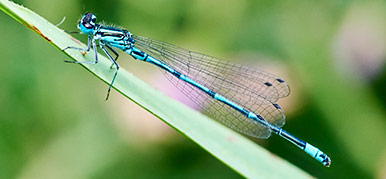
Identify nature
Found an animal, plant or fossil that you'd like to identify? Get help from our identification guides and apps, or ask our Museum experts for advice.

Protecting our planet
We're working towards a future where both people and the planet thrive.
Hear from scientists studying human impact and change in the natural world.
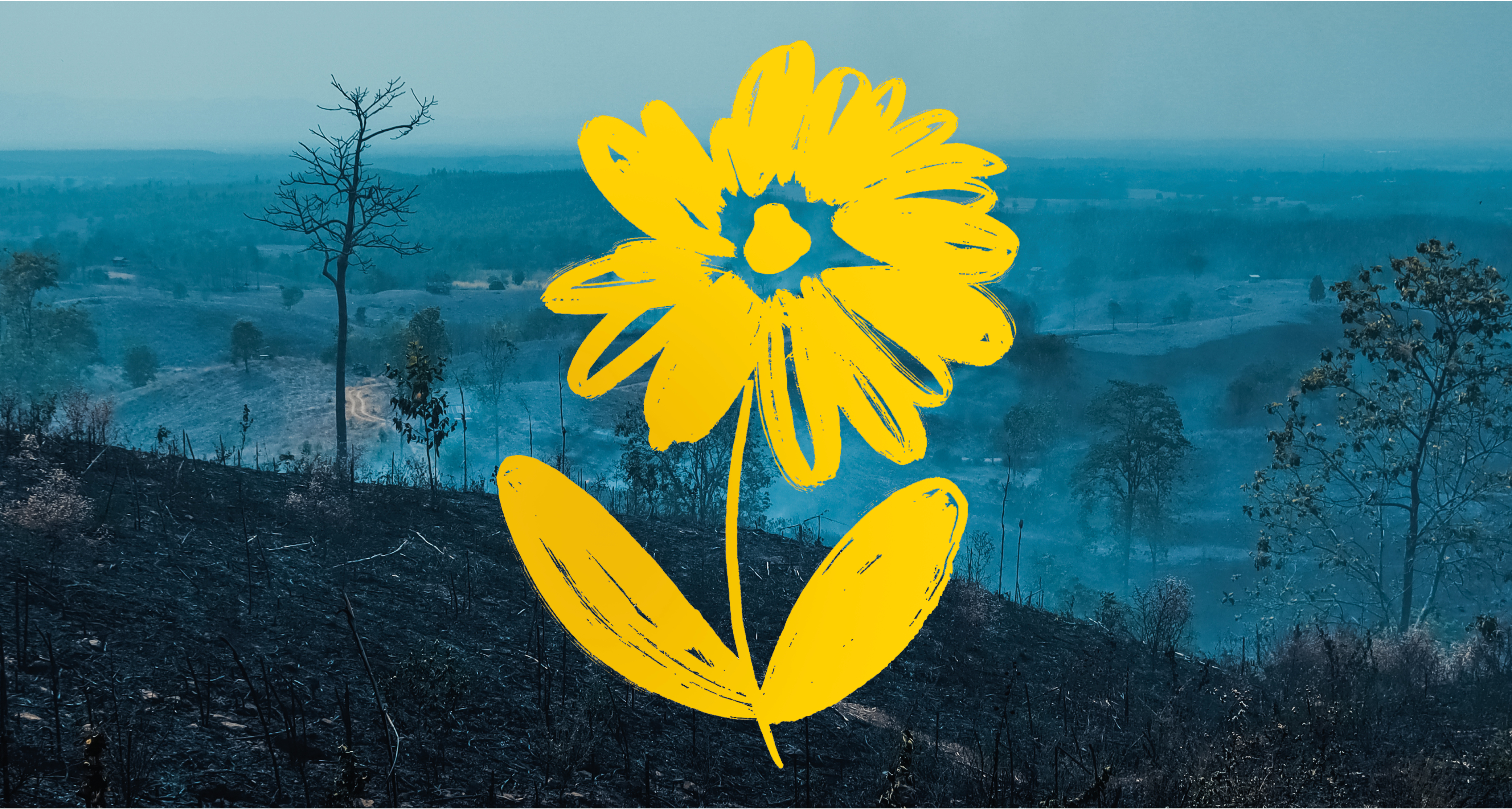
Fixing Our Broken Planet
Discover science-backed, hopeful solutions that will help us to create a more sustainable world.
New gallery open now.

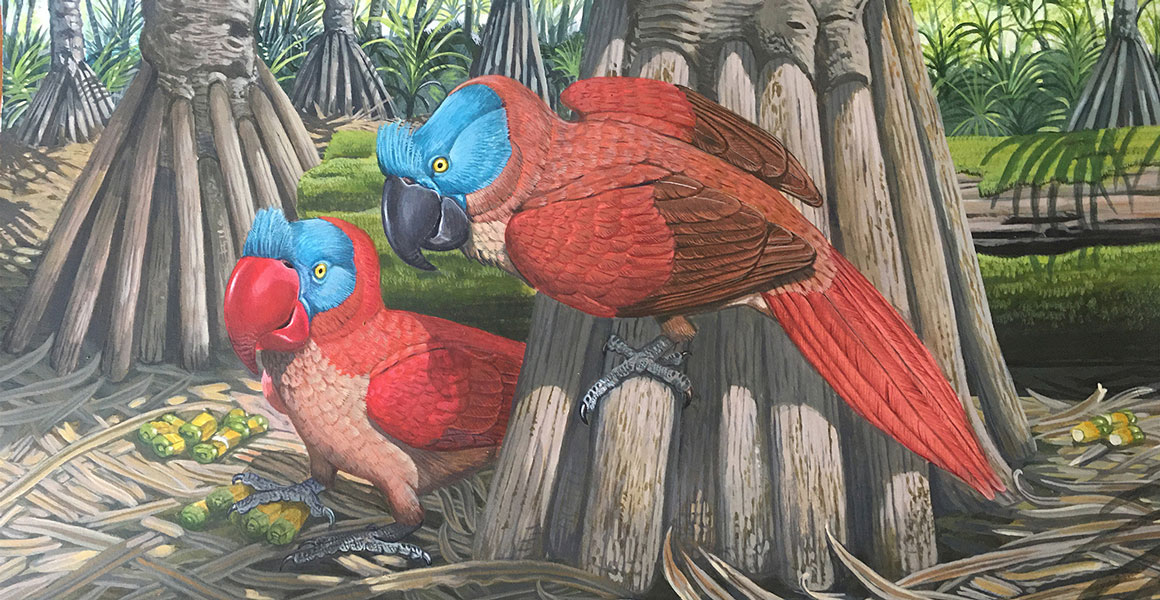
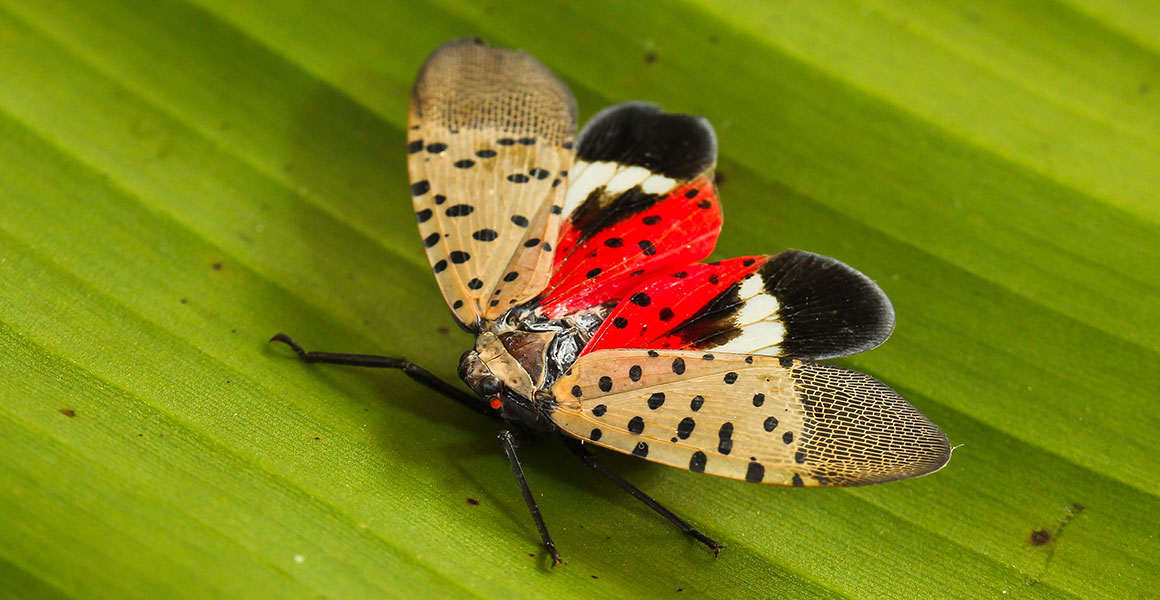

Don't miss a thing
Receive email updates about our news, science, exhibitions, events, products, services and fundraising activities. We may occasionally include third-party content from our corporate partners and other museums. We will not share your personal details with these third parties. You must be over the age of 13. Privacy notice.
Follow us on social media